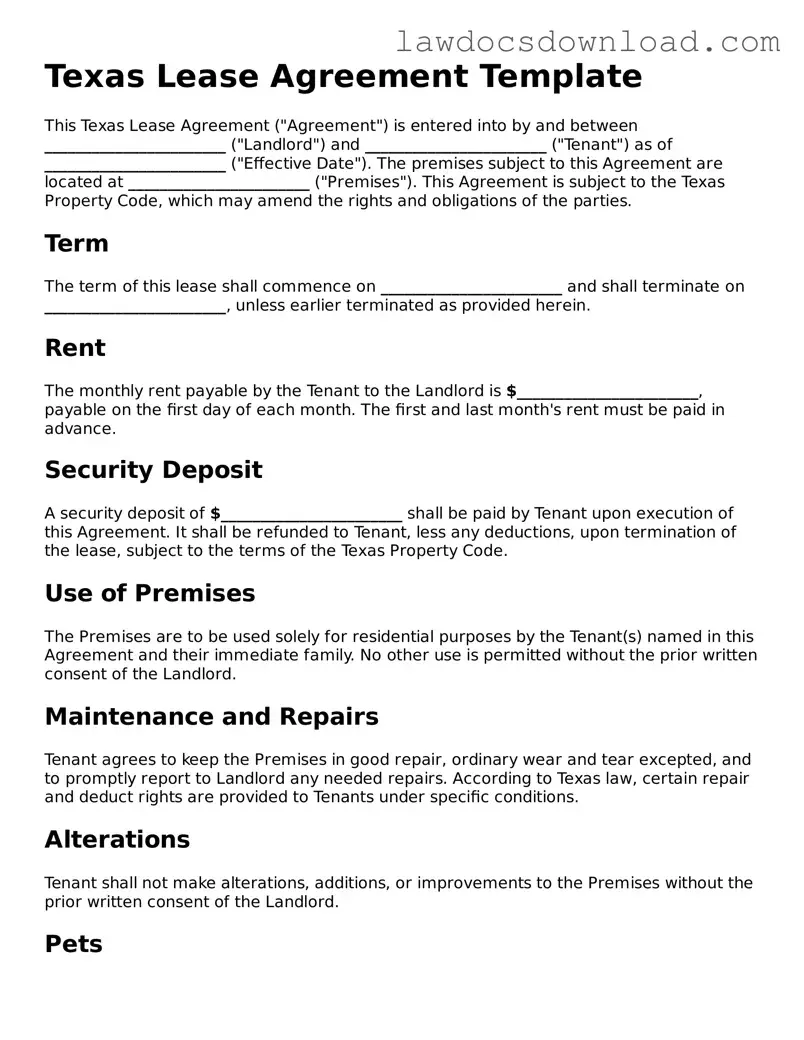Texas Lease Agreement Template
This Texas Lease Agreement ("Agreement") is entered into by and between _______________________ ("Landlord") and _______________________ ("Tenant") as of _______________________ ("Effective Date"). The premises subject to this Agreement are located at _______________________ ("Premises"). This Agreement is subject to the Texas Property Code, which may amend the rights and obligations of the parties.
Term
The term of this lease shall commence on _______________________ and shall terminate on _______________________, unless earlier terminated as provided herein.
Rent
The monthly rent payable by the Tenant to the Landlord is $_______________________, payable on the first day of each month. The first and last month's rent must be paid in advance.
Security Deposit
A security deposit of $_______________________ shall be paid by Tenant upon execution of this Agreement. It shall be refunded to Tenant, less any deductions, upon termination of the lease, subject to the terms of the Texas Property Code.
Use of Premises
The Premises are to be used solely for residential purposes by the Tenant(s) named in this Agreement and their immediate family. No other use is permitted without the prior written consent of the Landlord.
Maintenance and Repairs
Tenant agrees to keep the Premises in good repair, ordinary wear and tear excepted, and to promptly report to Landlord any needed repairs. According to Texas law, certain repair and deduct rights are provided to Tenants under specific conditions.
Alterations
Tenant shall not make alterations, additions, or improvements to the Premises without the prior written consent of the Landlord.
Pets
Pets are ☐ Allowed ☐ Not Allowed. If allowed, a non-refundable pet deposit of $_______________________ shall be paid by Tenant.
Subletting
Subletting or assignment of the lease is prohibited without the Landlord's prior written consent.
Governing Law
This Agreement shall be governed by and construed in accordance with the laws of the State of Texas.
Signatures
This Agreement, entered into at _______________________, Texas, is signed on the date first above written.
Landlord Signature: ___________________________________
Tenant Signature: _____________________________________
